Project leader
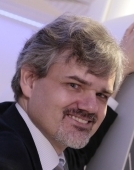 |
|
|
Project staff
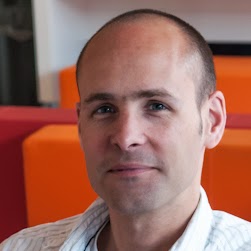 |
|
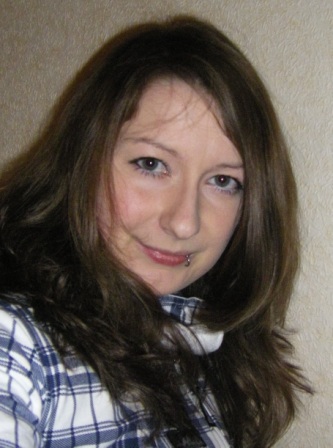 |
|
|
Institute presentation

Brain Innovation B.V. (BI), located in Maastricht, Netherlands, is manufacturer and distributor of several multi-modal neuroimaging and modeling software packages that are developed, tested, supported, and distributed by a team of more than 10 employees being experts in software development as well as in applied neuroscience, biomedical engineering, research methods, business administration and business management. BI has a substantial experience in international scientific collaboration. The current major product, BrainVoyager QX, is a commercially available cross-platform neuroimaging tool for fMRI, DTI, EEG, MEG and TMS neuronavigation that is used in hundreds of research labs. Brain Innovation has long-standing experience in online and offline machine learning methods and has pioneered multivariate fMRI analysis tools together with Maastricht University (e.g. searchlight mapping, recursive feature elimination) that have become standard in the neuroimaging community. Besides IMAGEMEND, BI has a substantial track record of involvement in EU-funded projects including Marie Curie ITNs “Codde” and “C7” and FP7 HEALTH INNOVATION grant “BRAINTRAIN”.
For real-time functional imaging and neurofeedback, BI has developed Turbo-BrainVoyager (TBV), a highly optimized, easy to use software package for the real-time analysis and dynamic visualization of functional magnetic resonance imaging data sets. BrainVoyager QX and Turbo-BrainVoyager serve as an important basis for the software development in IMAGEMEND. TBV has been developed over 12 years for advanced real-time applications, including neurofeedback studies and brain-computer interfaces (BCIs). BI has also collaborated on the first clinical applications of fMRI-based neurofeedback in depression and Parkinson’s disease.
Rainer Goebel is founder, CEO and chief software developer of Brain Innovation. He is also full professor of cognitive neuroscience at Maastricht University, director of the Maastricht Brain Imaging Centre and chief science and technology officer (CSTO) of Scannexus housing 3, 7 and 9.4 Tesla MRI scanners. He is developer of the leading commercial for neuroimaging data analysis and creator of the first commercially available software for real-time fMRI based neurofeedback and brain computer interfaces. He was elected president of the Organization for Human Brain Mapping and has published more than 200 scientific peer-reviewed papers on neuroimaging and computational neuroscience (including the journals Nature, Science, Neuron, Nature Neuroscience and PNAS, H-Index 52). He supervised more than 30 PhD students and postdocs, many of which now belong to the neuroimaging leadership (e.g. Elia Formisano, Niko Kriegeskorte, David Linden, Lars Muckli). He co-pioneered fMRI neurofeedback with Dr. Nikolaus Weiskopf (University College London) and Dr. Niels Birbaumer (Tübingen University) and is pioneer of social real-time fMRI studies (“Brain Pong” neurofeedback study). He is developer of the first fMRI-based BCI for communication and has been awarded with an ERC Advanced Investigator Grant (2011-2016) to crack the columnar-level code in specialized brain areas using ultra-high magnetic field fMRI.
Project leader
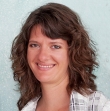 |
|
Project staff
 |
|
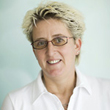 |
|
concentris is a small and alert team of project managers with longstanding experience in the management of research projects in the Framework Programmes of the EU Institute presentation.
They carry out the non-scientific tasks of EU projects and provide support and consultancy services for scientists and researchers at universities, in businesses and research institutes from the first project idea to the successful completion. As the project office, concentris is the central point of reference of IMAGEMEND. With know-how, concentration and dedication, they support their partners with the following services (WP7, WP8):
- Proposal writing and project planning – Intentionally increasing opportunities.
- Project management – Safe and professional from one source.
- Financial management – Minimising risks.
- Conference services – Helping to achieve more real results.
- Dissemination and project marketing – Making results visible.
- Training organisation – Improving research quality in Europe.
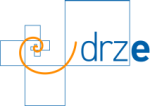
Deutsches Referenzzentrum für Ethik in den Biowissenschaften (DRZE)
German Reference Centre for Ethics in the Life Sciences
Bonner Talweg 57
53113 Bonn
Project leader
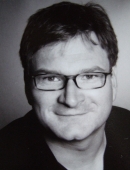 |
|
Project staff
 |
|
Institute presentation
The German Reference Centre for Ethics in the Life sciences (DRZE) is affiliated as central scientific institution to the University of Bonn (UBO). It is a national documentation and information centre covering the entire field of ethics in the biomedical sciences in Germany. DRZE was founded in 1999 in order to provide the scientific basis necessary for qualified bioethical discussion within German, European, and international frameworks. It receives public funding from the North-Rhine-Westphalian Academy of Sciences, Humanities and the Arts.
Main tasks of DRZE are to collect, prepare, and provide high-quality information from scientific fields of relevance to current bioethical debate within science, society, and politics; furthermore to compile and prepare normative foundations for qualified opinion and judgement formation processes, and to make these available in various professional formats. Therefore DRZE has a specialised library for applied ethics and several specialised databases, and offers a range of web-based services for different types of users. DRZE also hosts international workshops and conferences. The overall aim is to present German bioethical debate within European and international contexts, and to render international and European bioethical debate amenable to discussion in Germany.
The staff members of the DRZE have extensive experience in hosting and developing databases, such as literature, research projects, training materials, thesaurus development, the creation of web based data pooling and communication platforms as well as in the management of national and European research projects and networks. Priv.-Doz. Dr. Dirk Lanzerath is Secretary General of EUREC e.V. (European Network for Research Ethics Committees).The EUREC secretariat is located at the DRZE in Bonn.
Notes
The German Reference Centre for Ethics in the Life Sciences (DRZE) at the University of Bonn (UBO) will support the development and implementation of decision-making rules for clinical and research practice within the IMAGEMEND, in accordance with the legal guidelines and recommendations of relevant ethical and professional bodies. In cooperation with the researchers involved in IMAGEMEND DRZE will provide advice to researchers in order to ensure ethically sound informed consent procedures. To ensure that researchers are informed of new and emerging ethical issues and to find ways to handle them properly DRZE will establish links between researchers and Members of the European Network of Research Ethics Committees (EUREC).

Neuroimaging Genetics
300 Herston Road
Herston, Brisbane, 4006
AUSTRALIA
Project leader
 |
|
Project staff
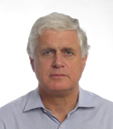 |
|
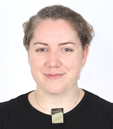 |
|
 |
|
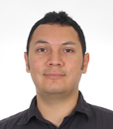 |
|
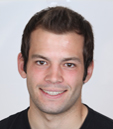 |
|
 |
|
Institute presentation
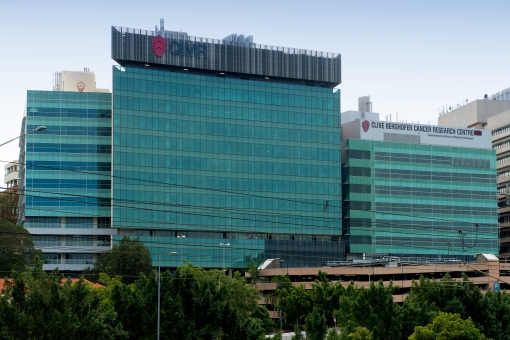
The QIMR Berghofer Medical Research Institute (until recently known as the Queensland Institute of Medical Research, www.qimrberghofer.edu.au) is a world leading translational research institute focused on cancer, infectious diseases, mental health and a range of complex diseases. Working in close collaboration with clinicians and other research institutes, our aim is to improve health by developing new diagnostics, better treatments and prevention strategies. QIMR Berghofer is home to more than 700 scientists, students and support staff in six research departments, in over 50 separate laboratories and a support division. According to the Nature Publishing Index 2012, QIMR Berghofer is the highest ranked medical research institute in Australia.
QIMR Berghofer’s Mental Health and Complex Disorders Program combines a number of disciplines to study the genetic and multi-factorial environmental influences in a range of diseases from schizophrenia and depression to haemochromatosis and migraine. These conditions hold an enormous burden of illness and unmet research need. QIMR Berghofer utilises imaging and gene sequencing technologies to provide unprecedented insight into the biology of cells, animals, and humans, and the genetic basis for a number of conditions. Through the use of brain imaging, computational modelling, and epidemiological studies, the Mental Health and Complex Disorders Program works to improve outcomes and recovery for those suffering with these diseases.
A number of groups from the program are directly involved in the IMAGEMEND project - Neuroimaging Genetics, Quantitative Genetics and Genetic Epidemiology. The Genetic Epidemiology laboratory has a long history in twin studies and is internationally renowned for conducting detailed phenotyping in large twin samples, with a strong focus on the genetics of anxiety, depression, and addiction disorders.
More recently, the Quantitative Genetics and Neuroimaging Genetics groups have emerged with interests including ADHD and magnetic resonance imaging (MRI) respectively. The Neuroimaging Genetics group focuses on elucidating the neurobiological and genetic causes of major mental illnesses through the integration of structural and functional neuroimaging, measures of cognition, health and wellbeing, and through behavioural and molecular genetic approaches. The primary goal of this research is the identification of the genes and pathways that influence the structure and function of the human brain, and provide a window into the biological mechanisms leading to mental illness.
As partners on the IMAGEMEND project, we will utilise data collected from our imaged sample - the Queensland Twin IMaging (QTIM) sample – to achieve the aims of the project. The QTIM sample is a large (n=1200) and well characterized population sample of young adults with multi-modal imaging (sMRI, DTI, fMRI, rsfMRI), cognitive, and clinical phenotyping, and with genome-wide genotyping for GWAS.



